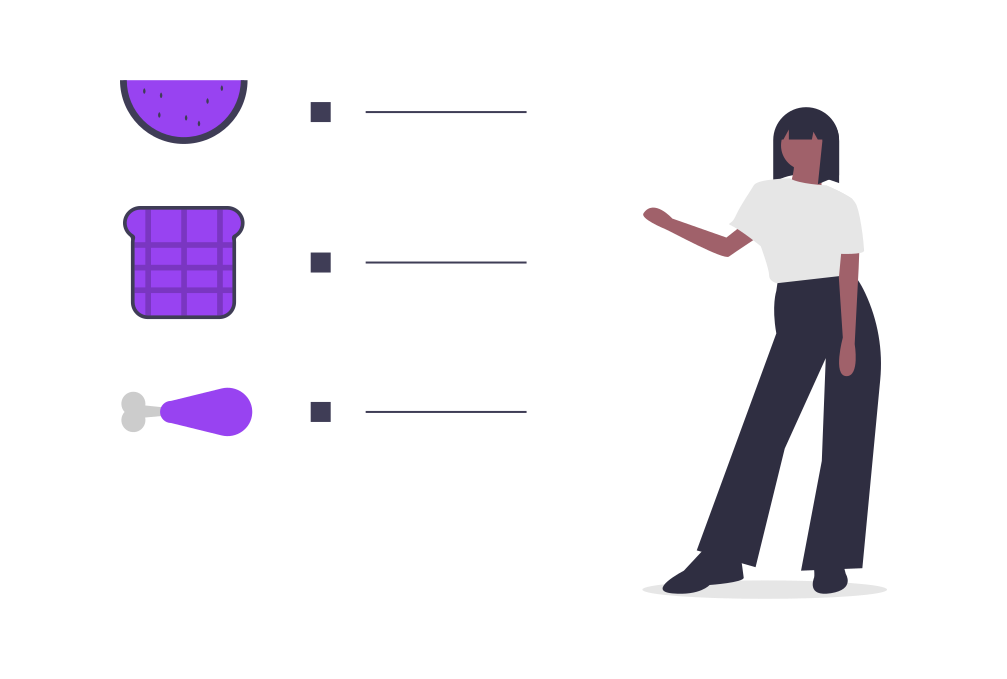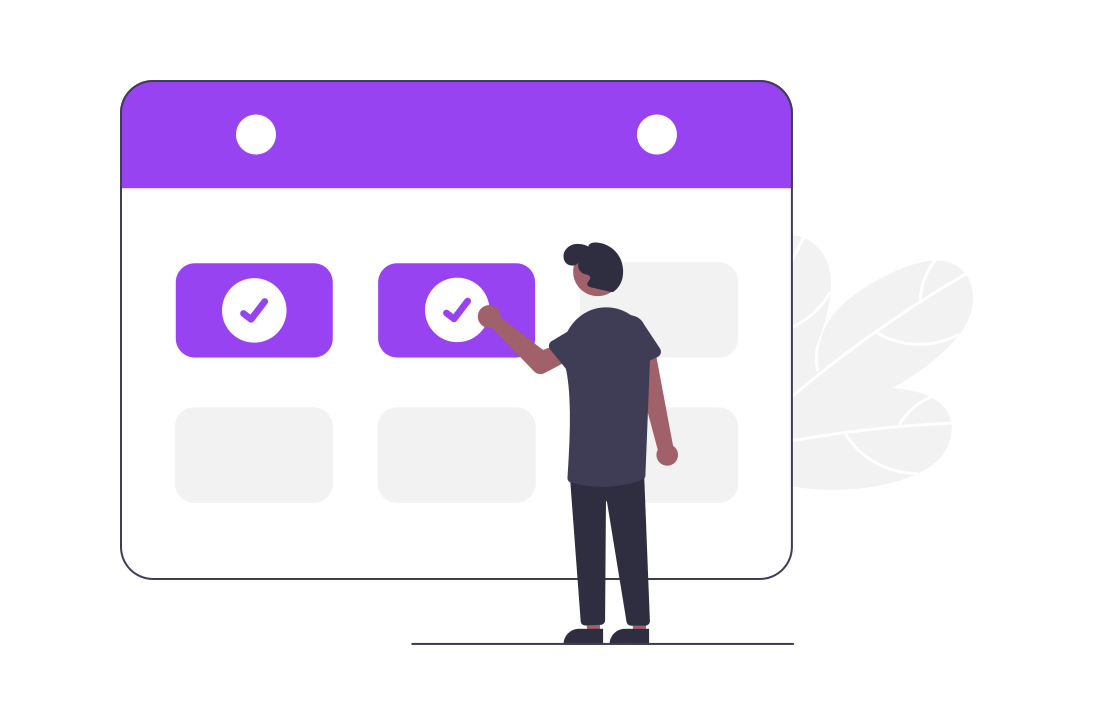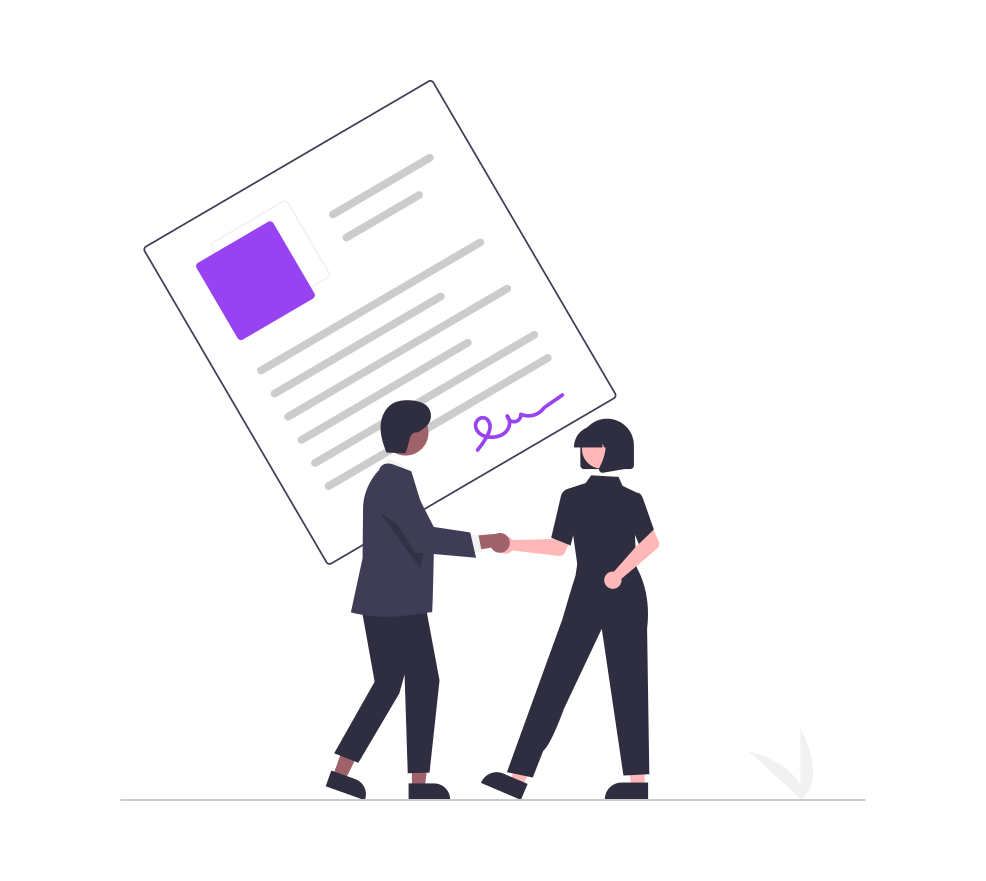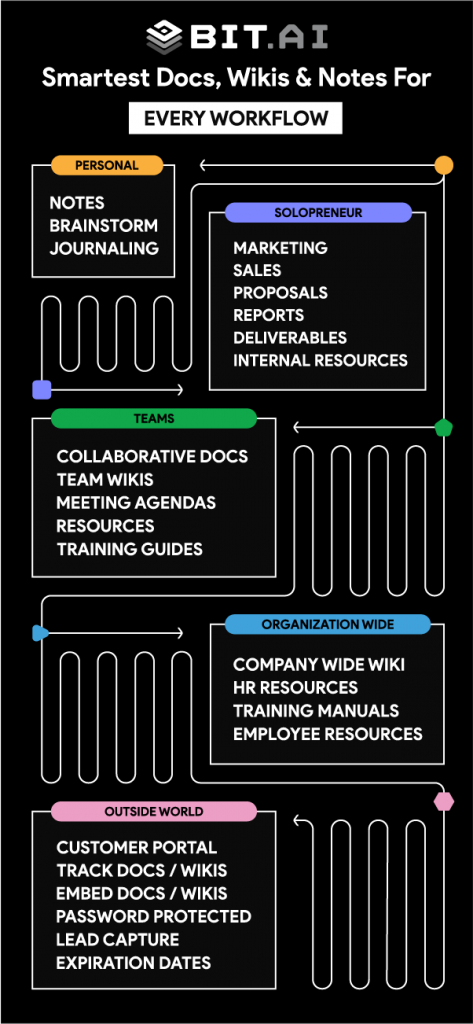Creating these documents from scratch can be challenging and time-consuming. Each document needs to be clear, accurate, and professional. This is where document templates come in handy. They simplify the process by providing ready-made formats that can be customized to fit your needs.
We’ve compiled a list of essential hospitality document templates to make your job easier. Whether you’re confirming a reservation, handling a cancellation, managing a group booking, or processing a room upgrade request, these templates will save you time and ensure you provide excellent service.
Explore these templates and use them to streamline your operations, enhance guest satisfaction, and maintain a professional image in all your communications.
20 Hospitality Document Templates
Reservation and Booking
1. Reservation Confirmation Letter
You have just booked a stay at our hotel, and the next step is receiving your reservation confirmation letter. This document serves as a written acknowledgment of your booking, ensuring all details are correct. It provides peace of mind by confirming that your reservation has been processed and that everything is ready for your arrival. This letter is crucial for both you and the hotel, as it outlines important information that guarantees a smooth check-in process and a pleasant stay.
Features Included in the Reservation Confirmation Letter:
- Guest Details: Your name and contact information are included to personalize the document and for easy reference.
- Booking Details: The dates of your stay, the type of room you have booked, and the rate are clearly listed.
- Payment Information: Details about your payment method, any deposits made, and the balance due upon arrival.
- Cancellation Policy: Important information on how to cancel your reservation and any associated fees.
- Special Requests: Any special requests you made at the time of booking, such as a room with a view or dietary requirements.
- Contact Information: Contact details of the hotel’s reservation department for any queries or further assistance.
- Check-in and Check-out Times: Clear information about when you can check in and when you need to check out.
Plans can change, and if you need to cancel your hotel reservation, the booking cancellation form is your go-to document. This form is designed to make the cancellation process straightforward and hassle-free. By filling out this form, you ensure that your request is officially recorded and processed. The form helps avoid any misunderstandings or disputes by clearly documenting your intent to cancel and the reasons behind it.
Key Components of the Booking Cancellation Form:
- Guest Details: Your name and contact information to identify the reservation being canceled.
- Reservation Number: The unique number associated with your booking to ensure accurate processing.
- Cancellation Reason: A section where you can provide the reason for your cancellation, which helps the hotel improve its services.
- Refund Policy: Information on any refunds due and how they will be processed, based on the hotel’s policies.
- Signature and Date: Your signature and the date of submission, confirming the authenticity of the request.
- Acknowledgement Section: A part of the form where the hotel acknowledges receipt and confirms the cancellation.
- Contact Information: Details for any follow-up questions or issues regarding the cancellation.
3. Group Booking Agreement
When you’re organizing a group stay, whether for a corporate event, wedding, or family reunion, the group booking agreement is essential. This document formalizes the arrangements between your group and the hotel, ensuring that all details are clearly outlined and agreed upon. It helps prevent misunderstandings and ensures that the needs of your group are met, providing a smooth and enjoyable experience for everyone involved.
Essential Elements of the Group Booking Agreement:
- Group Details: Information about the group, including the name and contact person for the group.
- Number of Rooms and Guests: Specifics on how many rooms are being booked and the total number of guests.
- Special Requests or Requirements: Any special needs or requests your group has, such as dietary restrictions or room configurations.
- Payment Terms and Conditions: Detailed information on the payment schedule, deposits required, and any applicable fees.
- Cancellation Policy: Terms regarding how cancellations will be handled, including any penalties or refund policies.
- Event Itinerary: An outline of any events or activities planned during the stay, including times and locations.
- Signatures of Both Parties: Signatures from both the group organizer and a hotel representative, confirming the agreement.
4. Room Upgrade Request Form
Sometimes you might want to enhance your stay with a room upgrade. The room upgrade request form is your tool for requesting an upgrade to a more luxurious room or suite. This form helps align the process, making it easy for you to communicate your preferences and for the hotel to check availability and provide the best options. It’s a straightforward way to ensure your stay is as comfortable and enjoyable as possible.
Details Included in the Room Upgrade Request Form:
- Guest Details: Your name and contact information to identify your existing reservation.
- Current Room Type: Information on the room you currently have booked.
- Desired Upgrade: Specifics on the type of room you wish to upgrade to.
- Availability Check: Section for the hotel to confirm the availability of the desired upgrade.
- Additional Costs: Clear information on any additional charges associated with the upgrade.
- Approval and Confirmation: Space for hotel approval and a confirmation of the upgrade.
- Special Instructions: Any additional instructions or preferences you have regarding the upgrade.
Guest Services
5. Guest Registration Card
When you arrive at a hotel, one of the first steps is filling out the guest registration card. This document is essential for checking in, as it collects all the necessary information to complete your registration. The card ensures the hotel has all your details for a smooth and efficient stay. It’s a simple form, but it’s crucial for the hotel to manage your reservation, provide personalized services, and ensure your safety.
Key Features of the Guest Registration Card:
- Guest Name and Contact Information: Your full name, phone number, and email address to identify you and communicate effectively.
- ID/Passport Number: Your identification details to verify your identity, which is often required by law.
- Room Number: The number of the room assigned to you, making it easy to reference your booking.
- Check-in and Check-out Dates: The dates you will be staying at the hotel, ensuring accurate records and billing.
- Signature: Your signature to confirm the information provided and agree to the hotel’s terms and conditions.
- Special Requests: Any specific needs or preferences you have, such as a crib or a quiet room.
- Emergency Contact Information: Contact details for someone to reach out to in case of an emergency.
6. Welcome Letter
Upon arriving at your hotel, you might receive a welcome letter. This personalized letter makes you feel valued and provides you with essential information about your stay. It’s more than just a greeting; it’s a guide to the hotel’s amenities, services, and local attractions. The welcome letter helps you settle in quickly and start enjoying your stay right away.
Important Elements of the Welcome Letter:
- Personalized Greeting: A warm welcome with your name, making the letter feel more personal and inviting.
- Overview of Hotel Amenities: A list of the hotel’s facilities, such as the pool, gym, spa, and business center.
- Dining Options: Information about the hotel’s restaurants, cafes, and room service, including hours of operation.
- Local Attractions: Recommendations for nearby places to visit, activities to do, and sights to see.
- Contact Information for Guest Services: How to reach the front desk or concierge for assistance during your stay.
- Wi-Fi Information: Details on how to connect to the hotel’s Wi-Fi network, including any passwords required.
- Check-out Procedures: Instructions on the check-out process, making your departure as smooth as your arrival.
Read More: Invitation Letter: What is it & How to Write it Perfectly!
7. Guest Feedback Form
Your opinion matters to hotels, and the guest feedback form is your way to share it. This form allows you to provide feedback on your stay, helping the hotel understand what they’re doing well and where they can improve. It’s an important tool for maintaining high standards of service and ensuring that future guests have a great experience. Your feedback is valued and often used to make positive changes.
Elements of the Guest Feedback Form:
- Guest Details: Your name and room number (optional), to personalize your feedback and follow up if necessary.
- Rating Scales for Various Services: Sections where you can rate different aspects of your stay, such as cleanliness, comfort, and service, typically on a scale from 1 to 5.
- Comments and Suggestions Section: Space for you to provide detailed feedback or suggestions for improvement.
- Staff Performance: Areas to comment on the friendliness, efficiency, and professionalism of the hotel staff.
- Facility Ratings: Specific feedback on hotel facilities like the gym, pool, or spa.
- Overall Experience: Your overall satisfaction with your stay and likelihood of returning or recommending the hotel.
- Contact Information for Follow-up: Option to provide your contact details if you’d like a follow-up on your feedback.
8. Concierge Service Request Form
Need help planning your activities during your stay? The concierge service request form is here to assist you. This form allows you to request various services from the hotel’s concierge, such as booking a restaurant, arranging transportation, or getting tickets to a local event. By filling out this form, you ensure your requests are clearly communicated and handled efficiently, making your stay more enjoyable and stress-free.
Features of the Concierge Service Request Form:
- Guest Name and Room Number: Your details to ensure the request is correctly logged and followed up.
- Date and Time of Request: When you need the service, helping the concierge plan and confirm availability.
- Type of Service Requested: Specifics about what you need, such as a dinner reservation, airport transfer, or event tickets.
- Special Instructions: Any additional details or preferences, like dietary restrictions for a restaurant booking or preferred seating at an event.
- Contact Information: How the concierge can reach you to confirm details or provide updates.
- Cost and Payment Information: If there’s a fee for the service, this section outlines the cost and how it will be billed.
- Confirmation and Follow-up: A section for the concierge to confirm the request has been received and any follow-up actions.
Food and Beverage
9. Banquet Event Order (BEO)
Planning a special event at a hotel involves a lot of details, and the banquet event order (BEO) helps ensure everything runs smoothly. This document is like a blueprint for your event, outlining all the specifics that you and the hotel have agreed upon. It’s a crucial document that covers everything from the menu and timing to special requests and billing details. Whether it’s a wedding reception, business conference, or birthday party, the BEO ensures that every aspect of your event is well-coordinated and executed to your expectations.

Key Components of the Banquet Event Order:
- Event Details: Specifics about the event such as the date, time, and location within the hotel.
- Client Contact Information: Your contact details or the details of the event organizer for easy communication.
- Menu Selection: The chosen menu options for the event, including appetizers, main courses, desserts, and beverages.
- Special Requests: Any additional requests such as dietary restrictions, special decorations, or AV equipment needs.
- Payment Terms: Details on pricing, deposits, and final payment deadlines.
- Setup and Timeline: The layout of the event space and a timeline of activities from setup to cleanup.
- Service Staff Requirements: Information on the number of staff needed for serving and assistance during the event.
- Signatures of Both Parties: Confirmation of agreement between you and the hotel, ensuring mutual understanding and accountability.
10. Restaurant Reservation Form
When you plan to dine at a hotel restaurant, the restaurant reservation form is your tool to ensure a smooth dining experience. This form allows you to reserve a table in advance, helping the restaurant manage seating and provide better service. Whether it’s for a dinner, business lunch, or family celebration, this form ensures your table is ready when you arrive. It’s a simple yet effective way to make dining arrangements and enjoy your meal without delays.
Important Elements of the Restaurant Reservation Form:
- Guest Name and Contact Information: Your details to confirm the reservation and reach you if needed.
- Date and Time of Reservation: When you plan to dine, ensuring the restaurant prepares for your arrival.
- Number of Guests: The size of your party to allocate the appropriate table size and seating arrangements.
- Special Requests: Any specific preferences such as a window seat, dietary restrictions, or occasion celebrations.
- Confirmation Details: How the restaurant confirms your reservation, either through email, phone, or SMS.
- Cancellation Policy: Information on how to cancel or modify your reservation if plans change.
- Additional Services: Options like pre-ordering special dishes or requesting a specific ambiance or service.
- Follow-up Information: Contact details for any follow-up questions or changes to your reservation.
11. Daily Food and Beverage Inventory Report
Managing a hotel’s food and beverage inventory requires meticulous tracking, and the daily food and beverage inventory report is the tool for the job. This report documents all items used and remaining each day, ensuring efficient stock management and cost control. It’s essential for kitchen staff, restaurant managers, and inventory controllers to monitor supplies, prevent shortages, and minimize waste. By keeping accurate records, the hotel can optimize its inventory levels and maintain quality service for guests.

Key Features of the Daily Food and Beverage Inventory Report:
- List of Items: A detailed list of all food and beverage items stocked in the hotel’s inventory.
- Starting Inventory: The quantity of each item available at the beginning of the day.
- Usage: Amount of each item used throughout the day in various departments like restaurants, bars, and room service.
- Ending Inventory: Remaining quantity of each item at the end of the day after all operations.
- Date and Timestamp: Recording the report’s date and time to ensure accuracy and traceability.
- Staff Signatures: Confirmation by responsible staff members that the inventory counts are accurate.
- Reports to Management: Summarizing overall inventory levels, usage trends, and any notable discrepancies.
- Replenishment Needs: Identifying items that need restocking and communicating with suppliers or purchasing departments.
Financial and Administrative
12. Guest Folio
During your stay at a hotel, the guest folio keeps track of all your expenses and charges. It’s like your personal bill that shows everything you’ve spent on room charges, food and beverages, and any additional services. The guest folio is important for both you and the hotel, as it helps manage payments, ensures accuracy in billing, and provides a summary of your stay’s financial details. It’s a transparent way to review your expenses and settle your account upon check-out.
Key Elements of the Guest Folio:
- Guest Information: Your name, room number, and contact details for identification purposes.
- Room Charges: Details of the room rate per night and the total amount for your stay.
- Additional Charges: Any additional services you’ve used, such as room service, laundry, or spa treatments.
- Taxes and Fees: Breakdown of applicable taxes and service charges included in your total bill.
- Payments Received: Record of any payments you’ve made during your stay.
- Balance Due: The remaining amount you need to settle upon check-out.
- Itemized List: A clear list of all charges incurred, providing transparency and clarity.
- Signature: Your acknowledgment of the charges and agreement to settle the balance.
13. Invoice Template
When you conduct business with a hotel, whether as a guest or a corporate client, you may receive an invoice. This document outlines the services provided and the corresponding charges. It’s crucial for accounting purposes, ensuring both parties have a record of the transaction details. The invoice helps maintain financial transparency and facilitates timely payment processing. Whether you’re paying for a stay, event services, or catering, the Invoice ensures accuracy and accountability in financial transactions.
Features of the Invoice Template:
- Hotel Details: Name, address, and contact information of the hotel issuing the invoice.
- Client Information: Your name or company name, address, and contact details for billing purposes.
- Invoice Number and Date: Unique identifier and the date the invoice was issued for tracking and reference.
- Itemized Services: Detailed list of services provided, such as room charges, event fees, or catering expenses.
- Unit Prices and Quantities: Cost per unit of service and the quantity used or booked.
- Total Amount Due: Sum of all charges, including taxes and fees, to be paid by the client.
- Payment Terms: Terms specifying when payment is due, acceptable payment methods, and any late fees.
- Terms and Conditions: Additional information about payment policies, refunds, and dispute resolution.
14. Payroll Report
Managing payroll for hotel staff involves meticulous tracking and reporting, and the payroll report is essential for this purpose. This report summarizes employee wages, hours worked, deductions, and net pay for a specific period. It ensures employees are compensated accurately and timely, while also providing valuable data for budgeting and financial planning. The payroll report is crucial for payroll administrators and HR departments to maintain compliance with labor laws and uphold employee satisfaction.
Key Components of the Payroll Report:
- Employee Information: Names, positions, and department details to identify each employee.
- Hours Worked: Breakdown of regular hours, overtime, and any other types of hours worked.
- Wage Rates: Hourly rates or salaries for each employee, including any applicable adjustments or bonuses.
- Deductions: Amounts withheld from gross pay, such as taxes, insurance premiums, and retirement contributions.
- Net Pay: Total amount paid to each employee after deductions, representing take-home pay.
- Pay Period: Dates covered by the payroll report, ensuring accuracy in reporting time worked.
- Approvals and Signatures: Authorization by payroll administrators and management to confirm accuracy and approval of payments.
- Employee Benefits: Information on benefits provided, such as health insurance, retirement plans, and paid time off.
15. Monthly Financial Report
For hotel management and stakeholders, understanding the financial health of the business is essential, and the monthly financial report provides this insight. This report summarizes revenue, expenses, and profitability for a given month, offering a comprehensive overview of financial performance. It helps identify trends, measure against budget goals, and make informed decisions for future planning. The monthly financial report is a critical tool for assessing the hotel’s financial stability and ensuring sustainable growth.
Elements Included in the Monthly Financial Report:
- Revenue Breakdown: Sources of income, including room revenue, food and beverage sales, and other services.
- Expense Categories: Detailed listing of expenses such as payroll, utilities, maintenance, and marketing costs.
- Profit and Loss Statement: Calculation of net profit or loss for the month after deducting expenses from revenue.
- Budget Comparison: Comparison of actual financial results against budgeted expectations to analyze variances.
- Financial Ratios: Metrics like gross profit margin and occupancy rates to assess operational efficiency.
- Summary and Analysis: Interpretation of financial results, highlighting key performance indicators and areas for improvement.
- Management Comments: Insights and recommendations from management regarding financial performance and strategic initiatives.
Contracts and Agreements
16. Business Sale Agreement
When selling or buying a hotel business, clarity and legal protection are crucial, and the business sale agreement ensures both parties are on the same page. This document outlines the terms and conditions of the sale, covering everything from the purchase price to liabilities and assets included. It’s a comprehensive contract that helps mitigate risks and disputes, ensuring a smooth transition of ownership. Whether you’re the seller or the buyer, the business sale agreement provides security and defines the responsibilities of each party involved.
Key Elements of the Business Sale Agreement:
- Parties Involved: Names and details of the seller(s) and buyer(s) participating in the transaction.
- Purchase Price: Agreed-upon amount for the sale of the hotel business and any payment terms.
- Assets Included: Inventory of assets being sold with the business, such as real estate, equipment, and goodwill.
- Liabilities: Identification and allocation of any existing debts or obligations related to the business.
- Closing Conditions: Requirements that must be met before the sale can be completed, such as inspections or approvals.
- Representations and Warranties: Statements made by the seller regarding the condition of the business and its assets.
- Non-compete Clause: Agreement that the seller will not engage in similar business activities that could compete with the buyer.
- Signatures and Notarization: Signatures of both parties to indicate agreement, often requiring notarization for legal validity.
17. Commercial Lease Agreement
Renting space for a hotel involves a commercial lease agreement, which outlines the terms and conditions of the lease between the landlord and tenant. This document governs the use of the property and sets forth rights and responsibilities for both parties. Whether leasing a building for hotel operations or additional facilities like a restaurant or conference center, the commercial lease agreement ensures clear expectations and protects the interests of both landlord and tenant.
Key Components of the Commercial Lease Agreement:
- Parties Involved: Names and contact information of the landlord and tenant entering into the lease.
- Property Description: Detailed description of the leased premises, including size, location, and permitted uses.
- Lease Term: Duration of the lease, including start date, end date, and any renewal options.
- Rent Amount and Payment Terms: Monthly or annual rent payments, due dates, and acceptable payment methods.
- Maintenance and Repairs: Responsibilities for maintaining the property, including repairs and upkeep.
- Utilities and Services: Allocation of costs for utilities such as water, electricity, and trash removal.
- Insurance and Indemnity: Requirements for property insurance and liability coverage, and indemnification clauses.
- Termination Conditions: Conditions under which either party can terminate the lease early, including notice periods.
18. Contractor Agreement
When hiring contractors for construction, renovation, or specialized services, a contractor agreement is essential to formalize the arrangement. This document clarifies the scope of work, payment terms, and expectations to ensure both parties understand their roles and responsibilities. Whether hiring for a hotel renovation project or ongoing maintenance services, the contractor agreement protects against misunderstandings and ensures quality and timely completion of work.
Elements Included in the Contractor Agreement:
- Contractor Details: Name, contact information, and qualifications of the contractor or contracting company.
- Scope of Work: Detailed description of the work to be performed, including specifications, timelines, and deliverables.
- Payment Terms: Compensation structure, including hourly rates, lump sum payments, or milestones for larger projects.
- Materials and Equipment: Specification of who provides necessary materials, equipment, and tools for the job.
- Insurance and Liability: Requirements for contractor insurance coverage and liability for damages or injuries.
- Confidentiality and Non-disclosure: Protection of sensitive information or trade secrets shared during the project.
- Termination Clause: Conditions under which either party can terminate the agreement, including notice periods.
- Dispute Resolution: Process for resolving disputes, such as mediation or arbitration, to avoid litigation.
19. Employment Agreement
When hiring staff for your hotel, an employment agreement is crucial for outlining the terms and conditions of employment. This contract sets clear expectations for both the employer and the employee, covering important aspects such as job responsibilities, compensation, and benefits. It ensures that both parties understand their rights and obligations, reducing the potential for misunderstandings and disputes. An employment agreement is essential for maintaining a professional and transparent relationship between hotel management and staff.
Key Features of the Employment Agreement:
- Employee and Employer Information: Names, addresses, and contact details of both the employee and the employer.
- Job Title and Description: Clear outline of the employee’s role, responsibilities, and duties.
- Compensation Details: Information on salary or hourly wage, payment schedule, and any bonuses or incentives.
- Working Hours: Expected working hours, including full-time or part-time status, shifts, and overtime policies.
- Benefits and Perks: Details of benefits offered, such as health insurance, retirement plans, paid time off, and other perks.
- Probation Period: Length of any probationary period and criteria for successful completion.
- Termination Conditions: Terms under which the employment can be terminated by either party, including notice periods and severance pay.
- Confidentiality and Non-compete Clauses: Agreements to protect the hotel’s confidential information and restrict competitive activities post-employment.
20. Partnership Agreement
Forming a partnership to operate a hotel involves a partnership agreement, which lays out the terms and conditions of the business relationship. This document is crucial for defining the roles, responsibilities, and financial contributions of each partner. It helps prevent conflicts by clearly outlining how decisions will be made, profits shared, and disputes resolved. A well-drafted partnership agreement is essential for ensuring a smooth and successful collaboration between business partners.
Elements Included in the Partnership Agreement:
- Partner Information: Names, addresses, and contact details of all partners involved in the business.
- Business Purpose: Clear description of the hotel’s business activities and objectives.
- Capital Contributions: Details of each partner’s financial contributions to the business, including initial investments and ongoing funding.
- Profit and Loss Sharing: How profits and losses will be distributed among the partners, based on their contributions or other agreed-upon terms.
- Management Structure: Roles and responsibilities of each partner in the day-to-day operations and decision-making processes.
- Dispute Resolution: Procedures for resolving disagreements or conflicts between partners, such as mediation or arbitration.
- Withdrawal or Addition of Partners: Terms for how partners can leave or join the partnership, including buyout provisions.
- Duration and Termination: Length of the partnership and conditions under which it can be dissolved, ensuring a clear exit strategy.
Conclusion
This discussion covered 20 essential hospitality document templates. You’ve learned about everything from reservation confirmation letters to invoice templates, and how they simplify your processes. Using these templates can save you time, and enhance your guests’ experiences.
Now, put this knowledge into action. Start using these templates to maintain a professional image. Also, always double-check details before sending documents, personalize your communications to make guests feel special, and keep digital copies for easy access.
Remember, “Better templates mean happier guests!” So, get started and make your hospitality management a breeze.
Further Reads:
Related posts
Bit.ai | Watch to Learn More
What is Bit.ai?
Bit.ai is an innovative AI-driven knowledge and Document Managment suite designed to empower knowledge workers by streamlining the creation of, documents, wikis, and notes. With an intuitive interface and seamless integration, Bit.ai acts as a versatile assistant to help you collaborate, generate, organize, and visualize your ideas effortlessly. Whether you are drafting a report, managing a project, collaborating with your team or clients, or brainstorming new concepts, Bit.ai brings intelligence and creativity to every aspect of your work process.









